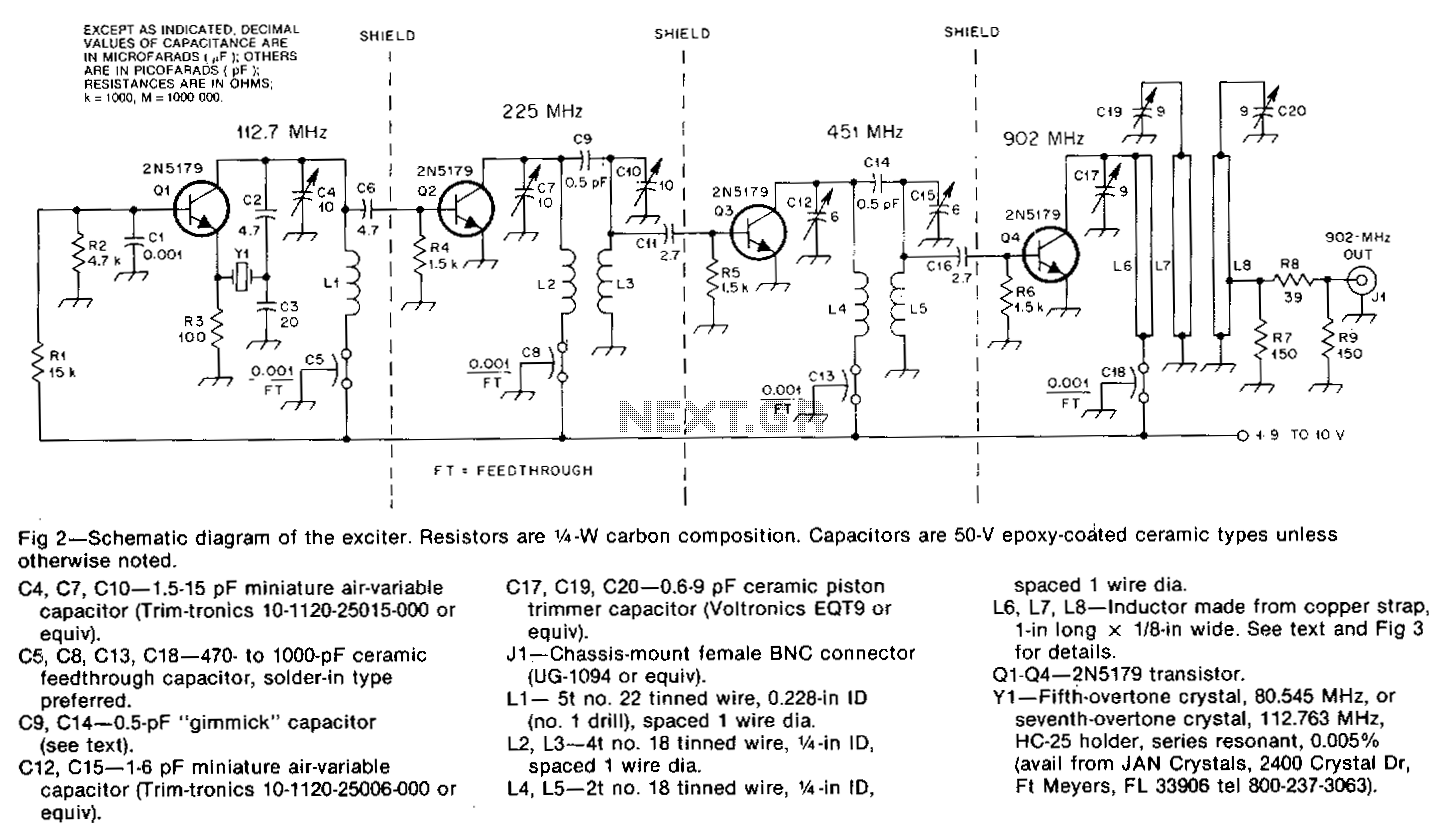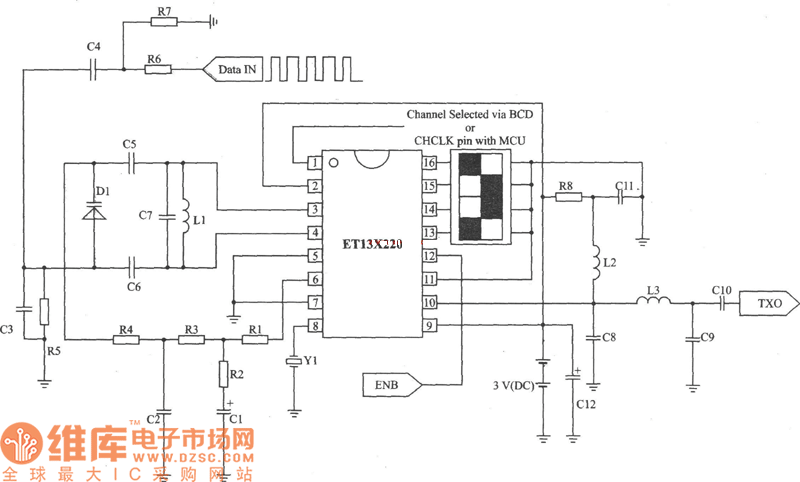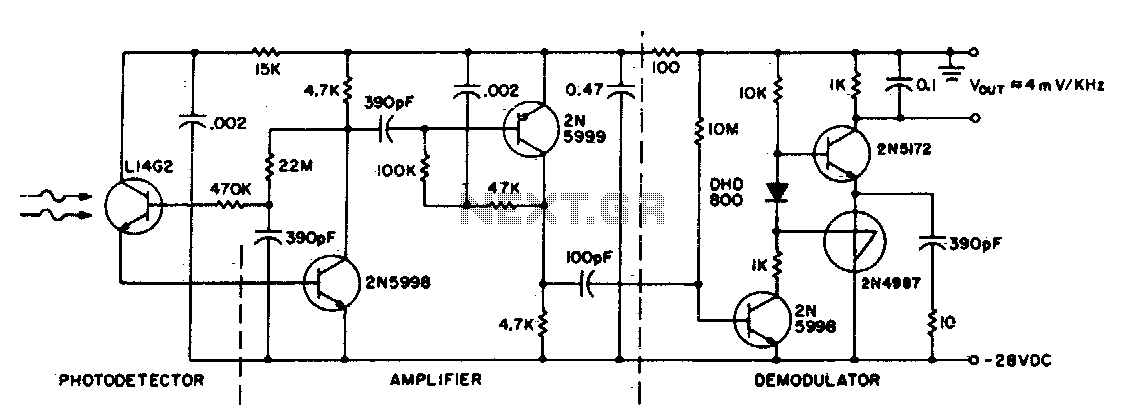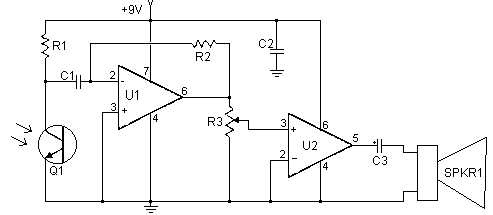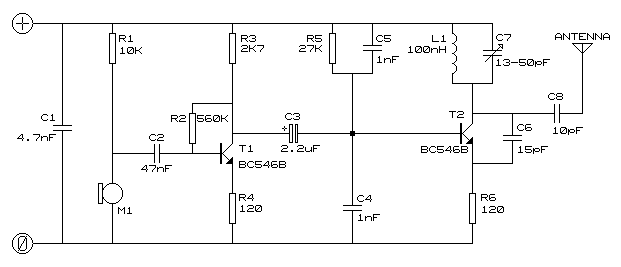
Infrared transmitter II
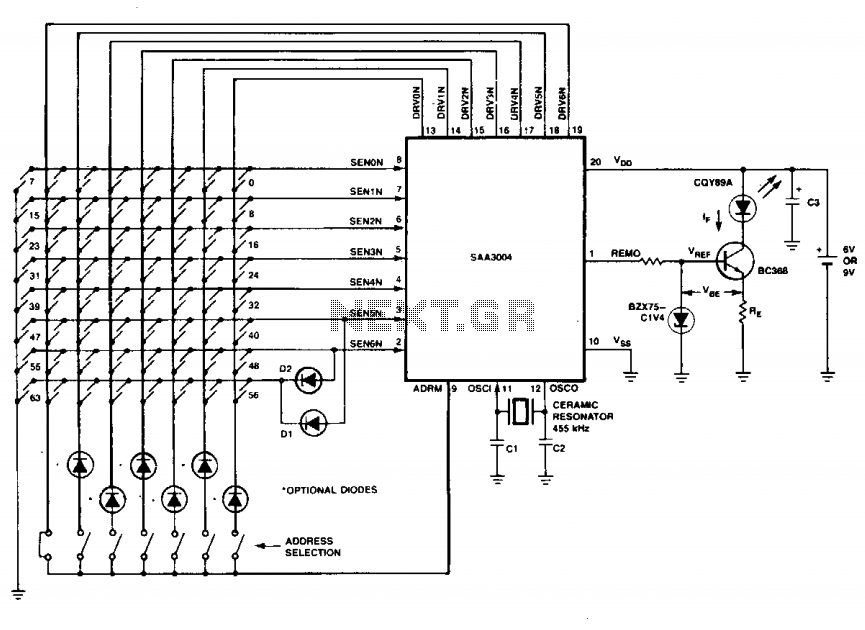
The transmitter keyboard is organized as a scanned matrix consisting of 7 driver outputs and 7 sense inputs. The driver outputs, labeled DRVON to DRV6N, are open-drain n-channel transistors that remain conductive in standby mode. The 7 sense inputs, from SENON to SEN6N, facilitate the generation of 56 command codes. With the inclusion of 2 external diodes, all 64 commands can be addressed. The sense inputs are equipped with p-channel pull-up transistors, maintaining a HIGH state until they are pulled LOW by connecting them to an output through a key depression to initiate code transmission.
The transmitter keyboard utilizes a matrix configuration that optimizes space and simplifies the detection of key presses. The 7 driver outputs serve as the active elements in the matrix, where each output can be activated to scan the corresponding sense inputs. The open-drain n-channel transistors ensure that the outputs can sink current when activated, allowing for the efficient control of the matrix during operation.
The sense inputs are designed to detect the state of each key in the matrix. When a key is pressed, it connects a sense input to one of the driver outputs, effectively pulling the input LOW. The p-channel pull-up transistors connected to the sense inputs maintain a HIGH state when no key is pressed, ensuring that the system can reliably detect key activations. This configuration allows for the generation of 56 unique command codes through combinations of key presses.
Furthermore, the addition of 2 external diodes enhances the functionality of the keyboard by expanding the number of addressable commands to 64. This feature is particularly beneficial in applications requiring a wide range of inputs, as it allows for greater flexibility in command generation.
In summary, the transmitter keyboard's matrix design, coupled with its driver outputs and sense inputs, provides a robust solution for key detection and command generation. The use of open-drain transistors and p-channel pull-ups ensures efficient operation and reliable performance in a variety of electronic applications.The transmitter keyboard is arranged as a scanned matrix. The matrix consists of 7 driver outputs and 7 sense inputs. The driver outputs DRVON to DRV6N are open-drain n-channel transistors and they are conductive in the stand-by mode. The 7 sense inputs (SENON to SEN6N) enable the generation of 56 command codes. With 2 external diodes all 64 commands are addressable. The sense inputs have p-channel pull-up transistors, so that they are HIGH until they are pulled LOW by connecting them to an output via a key depression to initiate a code transmission.
The transmitter keyboard utilizes a matrix configuration that optimizes space and simplifies the detection of key presses. The 7 driver outputs serve as the active elements in the matrix, where each output can be activated to scan the corresponding sense inputs. The open-drain n-channel transistors ensure that the outputs can sink current when activated, allowing for the efficient control of the matrix during operation.
The sense inputs are designed to detect the state of each key in the matrix. When a key is pressed, it connects a sense input to one of the driver outputs, effectively pulling the input LOW. The p-channel pull-up transistors connected to the sense inputs maintain a HIGH state when no key is pressed, ensuring that the system can reliably detect key activations. This configuration allows for the generation of 56 unique command codes through combinations of key presses.
Furthermore, the addition of 2 external diodes enhances the functionality of the keyboard by expanding the number of addressable commands to 64. This feature is particularly beneficial in applications requiring a wide range of inputs, as it allows for greater flexibility in command generation.
In summary, the transmitter keyboard's matrix design, coupled with its driver outputs and sense inputs, provides a robust solution for key detection and command generation. The use of open-drain transistors and p-channel pull-ups ensures efficient operation and reliable performance in a variety of electronic applications.The transmitter keyboard is arranged as a scanned matrix. The matrix consists of 7 driver outputs and 7 sense inputs. The driver outputs DRVON to DRV6N are open-drain n-channel transistors and they are conductive in the stand-by mode. The 7 sense inputs (SENON to SEN6N) enable the generation of 56 command codes. With 2 external diodes all 64 commands are addressable. The sense inputs have p-channel pull-up transistors, so that they are HIGH until they are pulled LOW by connecting them to an output via a key depression to initiate a code transmission.

